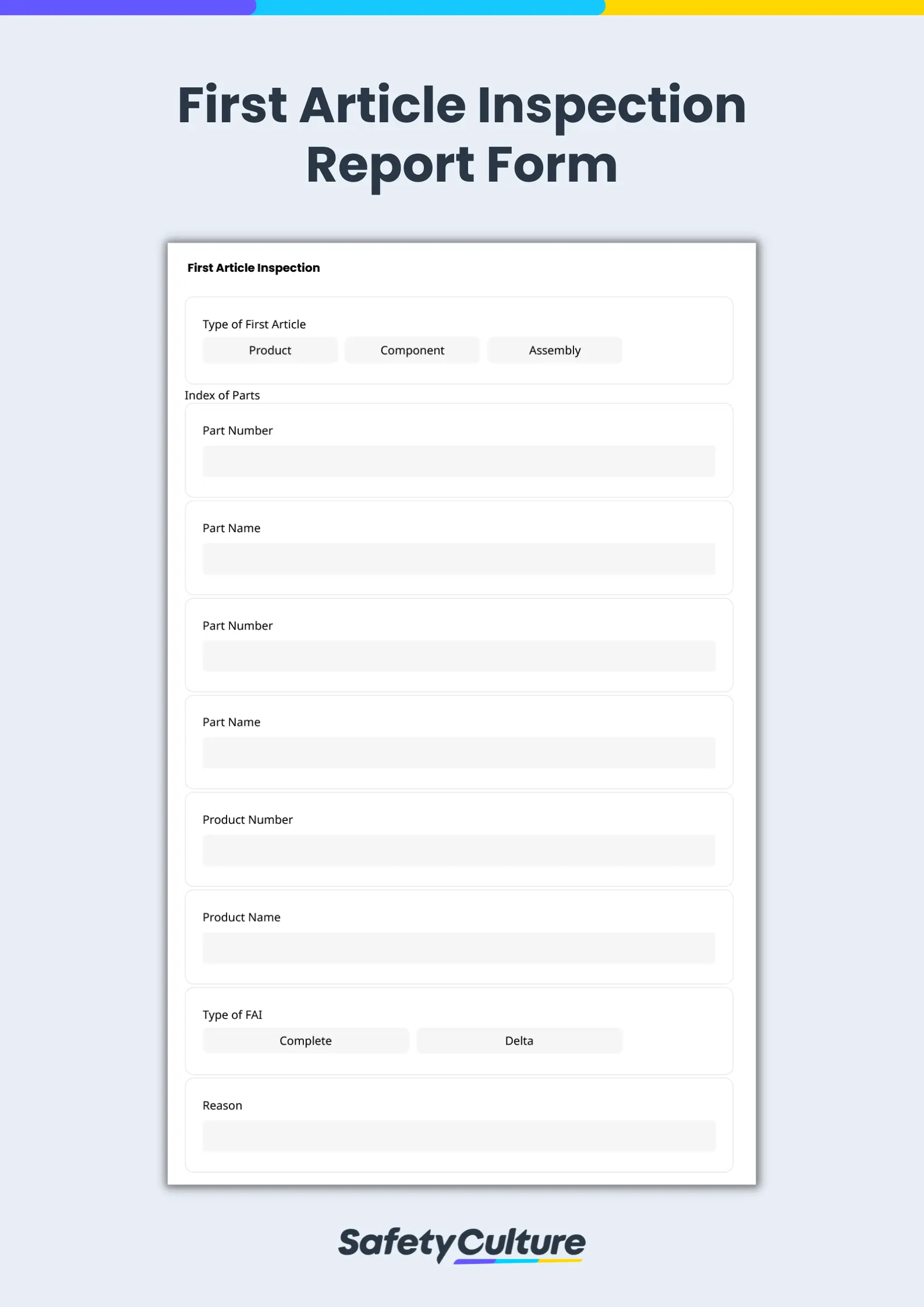What is a First Article Inspection?
First Article Inspection (FAI) is the process of verifying the design requirements of a product from the first production run. First article inspections can reduce costly production delays by ensuring the manufacturing process produces output that meets design requirements. An FAI is required by the 9102 standard developed by the International Aerospace Quality Group (IAQG) and published through the Society of Automotive Engineers (SAE).
What is a 9102 FAI?
A 9102 FAI is the first article inspection that adheres to the AS9102B or the Aerospace First Article Inspection Requirement. SAE offers a practical guide that sets the baseline requirements for performing and documenting FAI. Essentially, a 9102 FAI focuses on providing objective evidence the manufacturer’s processes can produce compliant products and that they have also incorporated statutory and regulatory requirements.
What is a Delta FAI?
A delta FAI, also referred to as a partial FAI, is one of the two most common types of first article inspections—the other one is called a full FAI, or a complete re-accomplishment of the first article inspection. Usually, a partial FAI is conducted only under certain circumstances such as changes in the design of a product, where the delta FAI report shows the difference between the original first article inspection report (FAIR) and the revised drawing.
First Article Inspection Frequency
Quality inspectors perform FAIs when there is a 2-year lapse in production or when there are significant changes in the product, including design, manufacturing source/process, location of manufacture, tooling/materials, or computer-generated program that can affect its fit, form, or function.
First Article Inspection Process
First article inspections provide assurance of product conformance at the start of series production and after design changes. Generally, here are the steps taken by quality inspectors when performing first article inspections:
- Prepare the engineering design and specification requirements
Quality managers should regularly coordinate with design engineers and fabrication managers to ascertain that the as-built technical drawings (electrical, mechanical, pneumatic, and process schemes) are followed. Before the first article inspection, prepare the instruments calibration certificates and refer to the equipment and materials data sheets to deliver high-quality machines with performance that clients can trust. - Determine the part or assembly to inspect
The “first article” to be inspected is neither the prototype model nor the first product from a production run. Quality inspectors should randomly select a representative item from the first production run and document part number accountability which includes the part number, part name, and manufacturing process reference. - Conduct raw materials, special processes, and functional testing
Quality inspectors measure and verify design characteristics through product-specific tests with required design tooling. For product accountability, each material and process used to manufacture the product is listed and certificates of conformance for special processes are added. Functional test procedures should also be cited with corresponding acceptance reports as supporting documents. - Evaluate characteristics accountability and compatibility
Inspection results can ascertain the necessity of a delta FAI or a full re-accomplishment of the first article inspection. In the case of non-conforming characteristics, design revisions should be implemented. Quality inspectors should review the manufacturing process and non-conformance documentation to improve the performance of a delta FAI. - Report the first article inspection with proper documentation
Upon the completion of the first article inspection, quality inspectors validate the FAI report with their signatures, indicating that all characteristics are accounted for; meet drawing requirements; or are properly documented for disposition. FAI reports should include photos of the product’s make and packaging to provide objective evidence.
What is an FAI Report?
An FAI report, or FAIR, is a document completed by quality inspectors which usually includes part number accountability, product accountability, and characteristic accountability. Generally, electronic signatures are acceptable in an FAI, as long as their usage and control are clearly defined in the organization’s quality management system (QMS).



